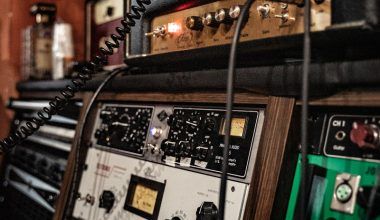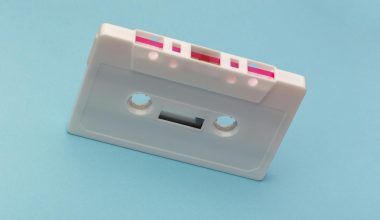When it comes to creating professional-quality recordings, having a good interface for recording vocals is crucial. Whether you’re a seasoned musician, a podcaster, or a complete beginner, the right audio interface can make a world of difference in your sound quality. In this blog, we’ll explore everything you need to know about choosing the best interface for your vocal recordings, so let’s dive in!
What Is an Audio Interface and Why Do You Need One?
If you’re new to recording, you might wonder what an audio interface actually does. Simply put, an audio interface is the bridge between your microphone and your computer. It converts analog sound signals into digital data that your computer can process.
Why is this important? Well, without a good interface for recording vocals, your audio can sound distorted, noisy, or just plain bad. A high-quality interface ensures that your recordings capture every nuance of your voice with crystal-clear accuracy.
Key Features to Look for in a Good Interface for Recording Vocals
When choosing an audio interface, it’s essential to consider the features that matter most for vocal recording. Here’s what to look for:
1. Microphone Preamps
High-quality preamps amplify your microphone’s signal without adding noise. Look for an interface with clean, transparent preamps for the best vocal recordings.
2. Phantom Power
If you’re using a condenser microphone, you’ll need phantom power. Most good interfaces come with this feature built-in.
3. Low Latency
Latency is the delay between when you sing and when you hear your voice in your headphones. A good interface minimizes latency, making recording smoother and more enjoyable.
4. Audio Resolution
For vocal recording, an interface with a high audio resolution (at least 24-bit/96kHz) is ideal. This ensures your recordings are detailed and professional.
5. Connectivity Options
Consider how you’ll connect your interface to your computer. USB is the most common, but Thunderbolt and FireWire offer faster speeds for high-end setups.
Top Interfaces for Vocal Recording
Here are some popular audio interfaces known for their excellent vocal recording capabilities:
1. Focusrite Scarlett Series
The Focusrite Scarlett series is a favorite among beginners and professionals alike. Its preamps are renowned for their clarity, and it’s incredibly user-friendly.
2. Universal Audio Apollo Twin
For those looking to splurge, the Apollo Twin offers exceptional sound quality and built-in effects. It’s perfect for serious vocalists.
3. PreSonus AudioBox USB 96
This budget-friendly option doesn’t compromise on quality. It’s portable, reliable, and perfect for home studios.
4. MOTU M2
With near-zero latency and an impressive dynamic range, the MOTU M2 is ideal for vocal recordings that demand precision.
5. Audient iD14
Audient interfaces are known for their professional-grade preamps, making them a great choice for vocalists.
Setting Up Your Interface for the Best Vocal Recordings
Even the best interface won’t deliver great results if it’s not set up properly. Here’s a step-by-step guide to get you started:
Step 1: Connect Your Interface
Use the appropriate cable to connect your interface to your computer. Install any necessary drivers or software provided by the manufacturer.
Step 2: Plug in Your Microphone
Connect your microphone to the interface using an XLR cable. Ensure that phantom power is enabled if you’re using a condenser mic.
Step 3: Set Your Levels
Adjust the gain knob on your interface until your voice is loud and clear without distorting. Use the meters on your interface or recording software as a guide.
Step 4: Monitor Your Sound
Plug in your headphones and listen to your voice as you record. This helps you stay on pitch and adjust your delivery in real-time.
Step 5: Choose the Right Software
Pair your interface with a good digital audio workstation (DAW) like Ableton Live, Logic Pro, or Pro Tools for seamless recording and editing.
Tips for Enhancing Your Vocal Recordings
Now that you’ve got a good interface for recording vocals, here are some additional tips to make your recordings shine:
1. Use Pop Filters
Pop filters reduce plosive sounds (like “p” and “b”) that can distort your recordings.
2. Record in a Quiet Space
Background noise can ruin an otherwise great take. Choose a quiet room and consider using acoustic treatment.
3. Warm Up Your Voice
A quick vocal warm-up can make a huge difference in your performance. Take a few minutes to stretch your vocal cords before recording.
4. Experiment with Mic Placement
The distance and angle of your microphone can affect the tone of your recordings. Try different positions to find what works best for your voice.
5. Monitor Levels Carefully
Keep an eye on your levels to avoid clipping. If your signal is too hot, reduce the gain on your interface.
Final Thoughts on Choosing a Good Interface for Recording Vocals
A good interface for recording vocals is an investment in your sound. By choosing the right one and setting it up correctly, you can elevate your recordings and bring your creative vision to life. Whether you’re just starting out or looking to upgrade your setup, there’s an interface out there that’s perfect for you.
Take the time to research, test, and experiment with different options. With the right tools and a little practice, you’ll be well on your way to creating stunning vocal recordings that stand out.
For further reading, explore these related articles:
For additional resources on music marketing and distribution, visit DMT Records Private Limited.






